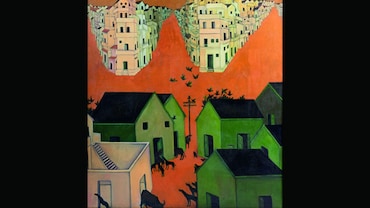- HOME
- /
- Culturescape
- /
- Studio
- /
Interpreting Artist Bharti Kher's Famous Sculpture, 'The Skin Speaks A Language Not Its Own'
Kher assumes the role of an “alchemist” in how she gives life to “something that is obviously dying”
 The Skin Speaks a Language Not its Own by Bharti Kher, Bindis on Fibreglass, 55 7⁄8 x 180 x 76¾ in, 2006 (Photo: Kiran Nadar Museum of Art)
The Skin Speaks a Language Not its Own by Bharti Kher, Bindis on Fibreglass, 55 7⁄8 x 180 x 76¾ in, 2006 (Photo: Kiran Nadar Museum of Art)
London-born, Delhi-based artist Bharti Kher assumes a unique vantage point as an outsider looking in. Melding tradition and modernity in her work, she extensively uses this lens in her art, particularly through the motif of the bindi to transform and animate objects and surfaces.
One of Kher’s most iconic pieces, The Skin Speaks a Language Not its Own, is a pathos-inspiring sculpture of a dying female elephant with a ‘skin’ dotted with saanp (serpentine) stick-on bindis.
The life-size sculpture combines the elephant and the bindi—two great motifs of Indian tradition.
The bindis covering the fibreglass elephant from its trunk to tail, as Kher puts it, act as the “surface of the skin that moves like a bloodline”. Kher also assumes the role of an “alchemist” in how she gives life to “something that is obviously dying”.
The thrusting weight of the elephant and the moving spermatozoid saanp bindi (which happens to be a symbol of fertility) has been interpreted by art critics as representing questions about India’s growth and its burgeoning population: whether it will prosper, or be crushed under its own mammoth weight.






